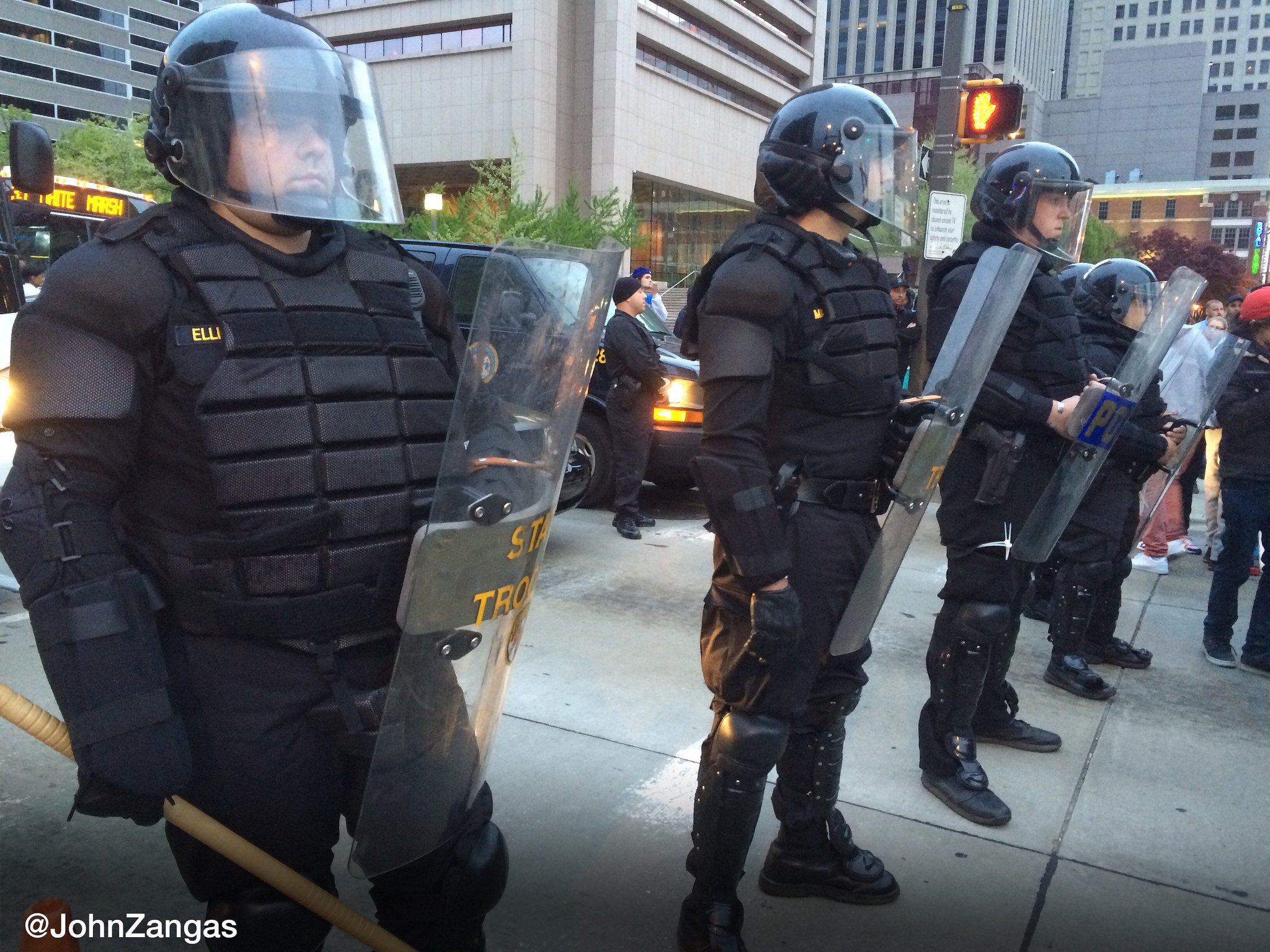Originally posted at MintPress News.
The mainstream media is consumed by Baltimore’s reaction to the death of Freddie Gray, a black man who died of severe spinal injuries after a violent arrest. While the TV networks highlight images of a burning CVS, less attention is being paid to a lengthy history of police corruption and brutality that led to this outburst of outrage in the city’s streets.
Gray’s death itself highlights multiple issues with the Baltimore Police Department. As with many other departments, officers with a history of violence are allowed to remain on the force with little to no accountability.
Baltimore Police Lt. Brian Rice, one of six officers suspended after the incident, initiated a bicycle chase after Gray made eye contact with him, which eventually led to the violent arrest that was caught on video. According to a report released by The Guardian on Thursday, Rice has a history of violence while on duty. A man, who the Guardian said its reporters had identified but kept anonymous for his protection, received a restraining order against Rice after a series of violent threats and incidents. During the duration of the order, Rice’s weapons, which included “a personal Glock handgun, long guns and a cross-bow,” were confiscated.
Video evidence also shows Rice begging for medical assistance as the arresting officers load him into a police van. Not only have police officials admitted Gray should have received medical assistance before being loadedin the van, Luke Broadwater, a reporter with The Baltimore Sun, told PBS that Baltimore police have a history of injuring detainees through a practice known as a “rough ride”:
Well, a rough ride is an unsanctioned technique. It’s actually illegal. You’re not supposed to do it. It violates department policy.
By policy, detainees are supposed to be seatbelted and secured inside a van … There have been multiple lawsuits against the police department, over time, including some big judgments, for these kinds of actions.
And the problem with a rough ride is because the person has their hands handcuffed, they can’t brace themselves. So, if you take a rapid turn around the corner and cause the gentleman to fall forward, bashing his head into something, there’s no way for him to brace himself.
Indeed, Baltimore was forced to pay out over $45 million dollars to two individuals paralyzed by “rough rides,” with a third lawsuit currently pending in federal court. The practice is used in other departments, too. In Philadelphia, for example, it’s called a “nickel ride.”
But Gray’s death is only part of the BPD’s troubles. The Justice Department launched a probe into Baltimore police corruption in October 2014, as a result of multiple allegations of civil rights violations. The investigation came after an important report by The Sun called “Undue Force,” released the previous month, showed the city had paid out $5.7 million dollars since 2011 as a result of lawsuits stemming from violent arrests.
The Sun reported:
Victims include a 15-year-old boy riding a dirt bike, a 26-year-old pregnant accountant who had witnessed a beating, a 50-year-old woman selling church raffle tickets, a 65-year-old church deacon rolling a cigarette and an 87-year-old grandmother aiding her wounded grandson.
Those cases detail a frightful human toll. Officers have battered dozens of residents who suffered broken bones — jaws, noses, arms, legs, ankles — head trauma, organ failure, and even death, coming during questionable arrests. Some residents were beaten while handcuffed; others were thrown to the pavement.
The Justice Department investigation seems to have done nothing to stem the tide of police brutality reports in Baltimore. Conor Friedersdorf, writing for The Atlantic, offers a shocking litany of more recent incidents of Baltimore police brutality, such as an officer who was never even prosecuted for holding a Taser on a teenage meningitis patient until he died.
And while police shootings of dogs may have become sadly commonplace, Baltimore Police officers have taken animal killing to extremes:
In July [of 2014], “Officer Thomas Schmidt, a 24-year veteran assigned to the Emergency Services unit, was placed on paid administrative leave after police say he held down a Shar-Pei while a fellow officer, Jeffrey Bolger, slit the dog’s throat.’ A month later, a Baltimore police officer plead guilty ‘to a felony animal cruelty charge after he fatally beat and choked his girlfriend’s Jack Russell terrier,” an August 5 article noted.
This history of police violence should be remembered when watching the reactions of Baltimore’s populace. Property damage must be compared to the broken lives caused by police brutality, most of whom will never be named in any media article. As Benji Hart pointed out on Tuesday in Salon:
Violence is beating, harassing, tazing, assaulting and shooting Black, trans, immigrant, women, and queer people, and that is the reality many of us are dealing with daily. … When the free market, real estate, the elected government, the legal system have all shown you they are not going to protect you—in fact, that they are the sources of the greatest violence you face—then political action becomes about stopping the machine that is trying to kill you, even if only for a moment, getting the boot off your neck, even if it only allows you a second of air.
